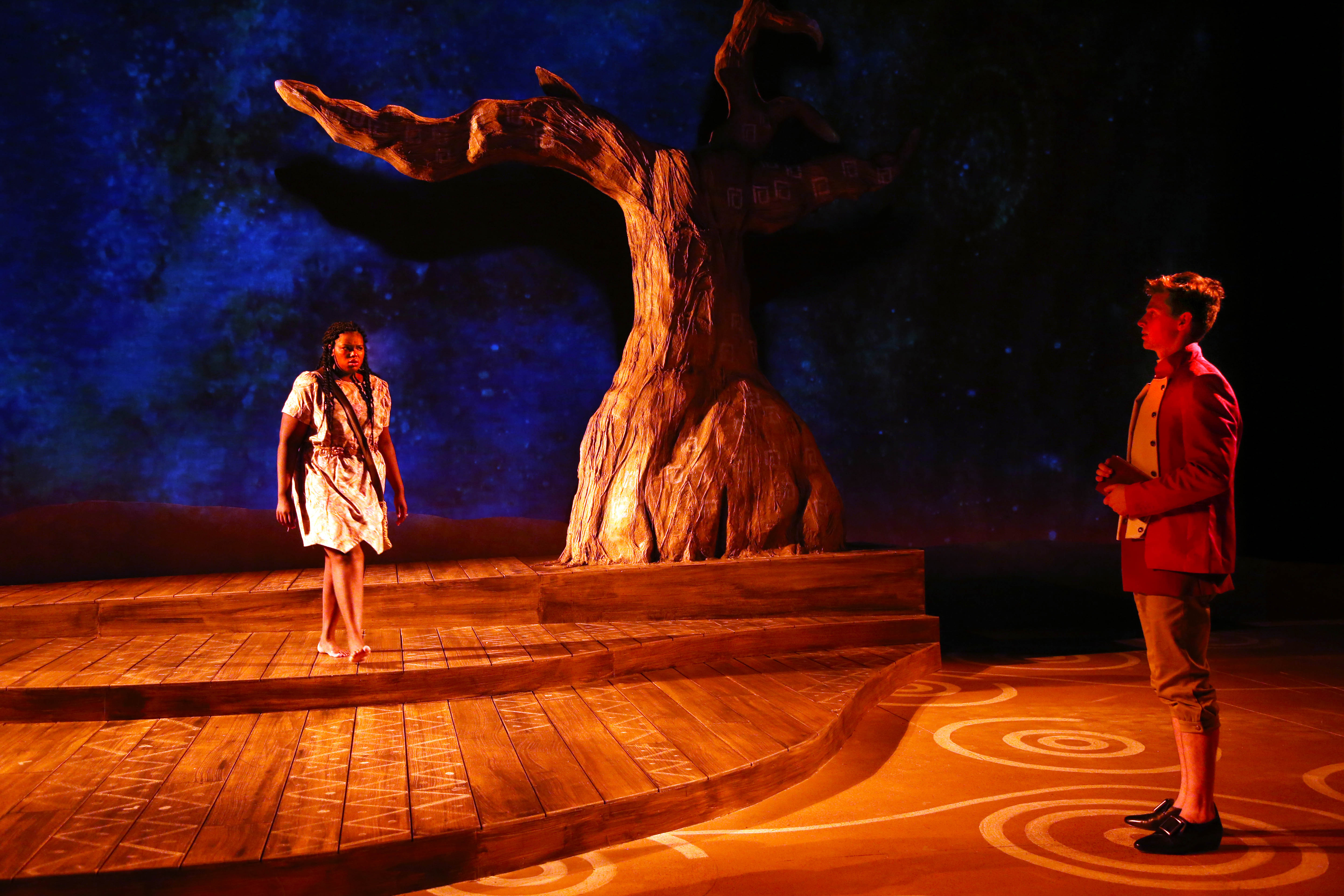When students register for the class listed as DRAM 3142 in the Registrar’s list of courses it is not unusual for them to send an email to Lindsay Cummings, associate professor and director of Theatre Studies, asking just what it is they are going to study in a class titled Dramaturgy I.
“The dramaturg is the person who has probably written the program notes they’re reading, and if there is a lobby display outside that is providing context for the play it was possibly put together by the dramaturg,” says Cummings, who serves as dramaturg for the Connecticut Repertory Theatre. “My quick definition is that a dramaturg is someone who is attempting to help people have the deepest, richest, most enjoyable experience of the play possible. That goes for the production team and the audience. It’s probably the least broadly understood aspect of the production team.”
Dramaturgs – the term is Greek in origin, and roughly means “drama worker” – do script analysis and research into the time period of the play and bring that information into the rehearsal for the actors. They talk with the director about that material, and once the play opens they share it with the audience through the playbill, website information, talkbacks, and other forms of outreach.
For example, when CRT presented “The Three Musketeers” in 2013, based on the 1844 Alexandre Dumas historical adventure novel set in the 17th century, a dramaturgical website for the production team was set up that included details about the Dumas story, relationships between the main characters, a general history of the time period and photos of the architecture of the Palace of Versailles and Luxembourg Palace. With sword fighting an integral part of the story of the elite guards who protected the King of France, the website also included video clips of sword fighting scenes from film adaptations of the novel and from the “Pirates of the Caribbean” films.
While actors, directors and set designers do their own research to gain insight into the characters and the world of a play as part of their preparation, the dramaturg can spend more time uncovering in-depth information to help the performers, Cummings says.
“They are thinking about how to winnow that vast world of information down to the most helpful things so the actor knows, for instance, where they fit into the class structure at that time so it helps them understand why they make certain behavioral choices that they do in a scene,” she says. “You’re really trying to focus the information so that the actor understands the world they’re living in and where the character fits into that world. Every play is its own unique research challenge and opportunity. Every era in history is going to lead you down a different rabbit hole. You can get lost in it.”
Cummings says students studying the role of dramaturg most often seek guidance finding sources for the information they need and assistance determining what is going to be the most helpful to the actors, the director, and the audience.
“A lot of students haven’t used the library in depth, and the kind of research dramaturgs are doing tends to be information not easily available on the internet,” she notes.“I’m teaching students a level of research they’ve not engaged with yet. It’s old school. There’s certainly a lot of good information on the internet but some of these things you’re researching, you actually need books.”
An example of such a challenge is the 2017 CRT production of Timberlake Wertenbaker’s “Our Country’s Good,” a play about the first penal colony in Australia. The play addresses English society at that time, the conditions in the penal colony and on the ship traveling to Australia, and the meeting of Aboriginal and English worldviews.
“As much information as is available on the internet, Aboriginal history, worldviews, and theology are not so easy to access,” Cummings says. “That was something the student dramaturg needed to go find scholarly books on. That’s not information you can easily digest into a webpage. You can’t write a paragraph on an entire people’s worldview and accurately represent it.”
There are prerequisites in script analysis and the history of drama before taking the class in dramaturgy, which is open to any student. Cummings says often non-theater majors who take the class want to learn more about script analysis or film production, and students pursuing a minor in theatre seek to experience the more intellectual side of dramatic arts.
“The dramaturgy course itself is a mock production course. We talk about the history of dramaturgy, in depth play analysis, practical dramaturgy,” she says. “They are assigned a production, write program notes, and execute those elements of program production. “
At the same time, Dramatic Arts majors can pursue a concentration in dramaturgy by taking 18 credits of coursework that includes more in-depth study of playwriting and various theatre genres such as African American Theatre or Women in Theatre. These students may work as the dramaturg for CRT productions through an independent study class.
Cummings says the Equity actors who arrive in Storrs to work with UConn’s student actors in productions appreciate the insights provided by the CRT dramaturgs.
“They tell us what a joy it is to have someone helping them with that research and providing them with that information,” she says. “Many regional theaters have dramaturgs on staff but because it is what we would consider an added function and not an essential function, not every company has the money for that.”
With revivals of musicals and dramatic plays arriving on Broadway or in regional theatre, dramaturgs often have different challenges in writing about the production that may be very familiar to the audience from films or television, Cummings says.
“Sometimes what you’ll see in a program note is not the historical context because maybe the audience is already very familiar with that or it’s not terribly important to understanding the play, but more about what this production team has attempt to do in the revival to make it different or to make it speak to this audience today. Sometimes that aspect of audience enrichment is about helping to explain the artistic choices of the production,” she says.
A case in point is last year’s CRT production of Shakespeare’s “Henry IV, Parts 1 & 2” which featured women in the leading roles when Glenda Jackson was simultaneously on Broadway starring in “King Lear.” Student dramaturgs Julius Cruz ’20 SFA and Eddie Vitcavage ’20 SFA focused their “Dramaturgs’ Note” on the history of women taking on male roles in Shakespearian productions, including Sarah Bernhardt as Hamlet in 1899 and the work of the Los Angeles Women’s Shakespeare Company, which features all female Shakespearian productions.
“Cross-gendered casting allows audiences and actors to create new ideas about our world,” they wrote. “A woman playing a traditionally male role brings their personal outlook of the world into the piece and opens the door to a variety of new understandings.”
Listen to Lindsay Cummings’ interview with Ken Best on UConn 360:



